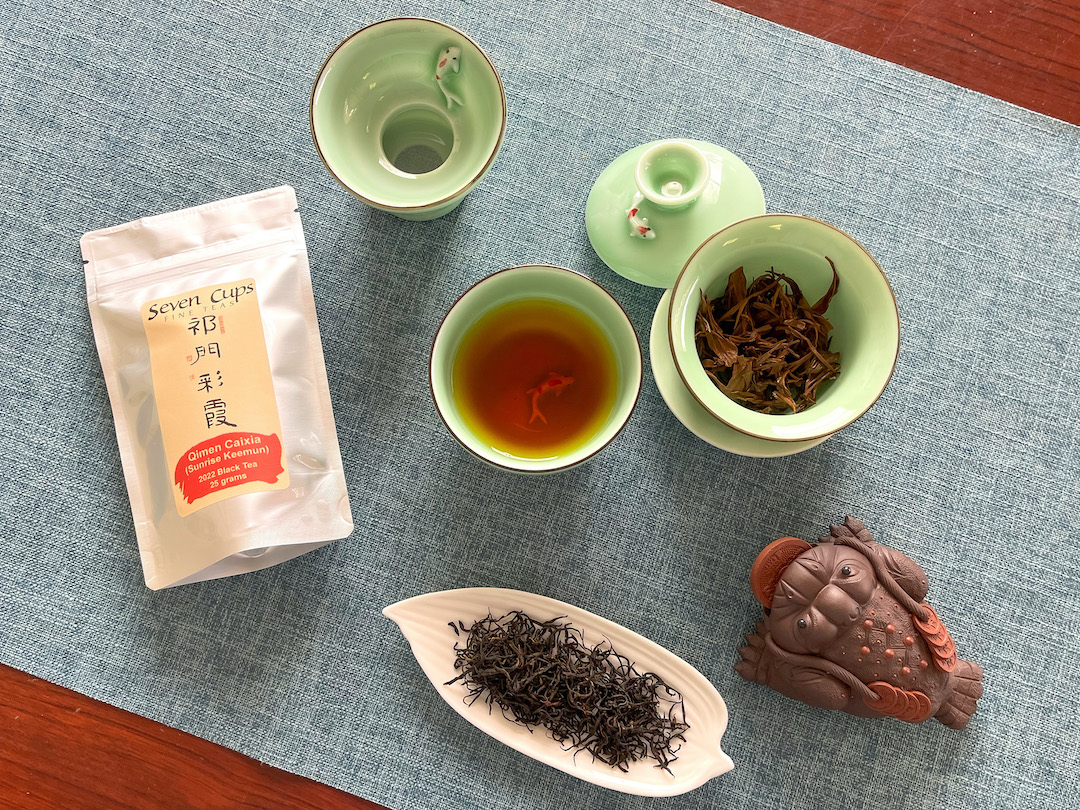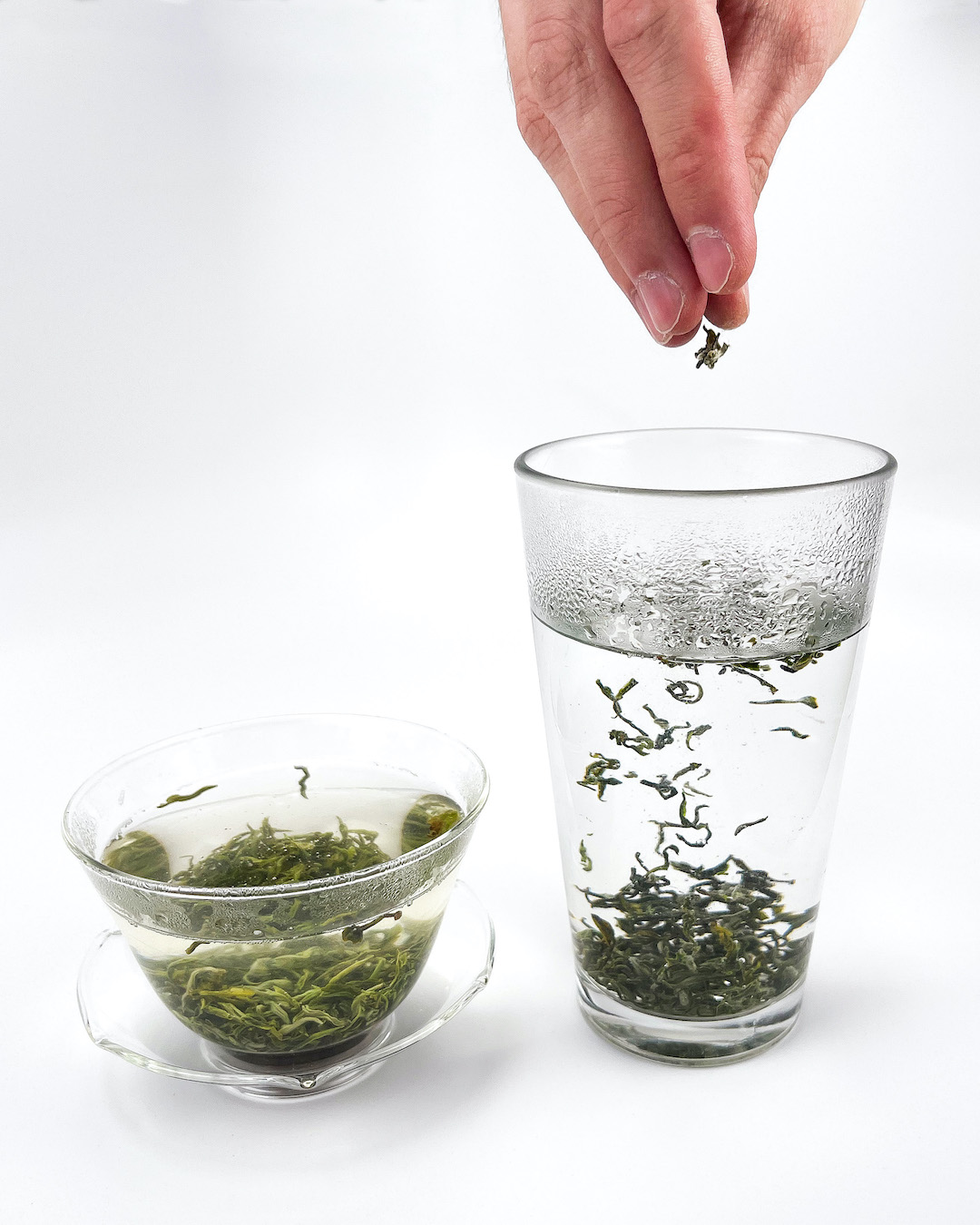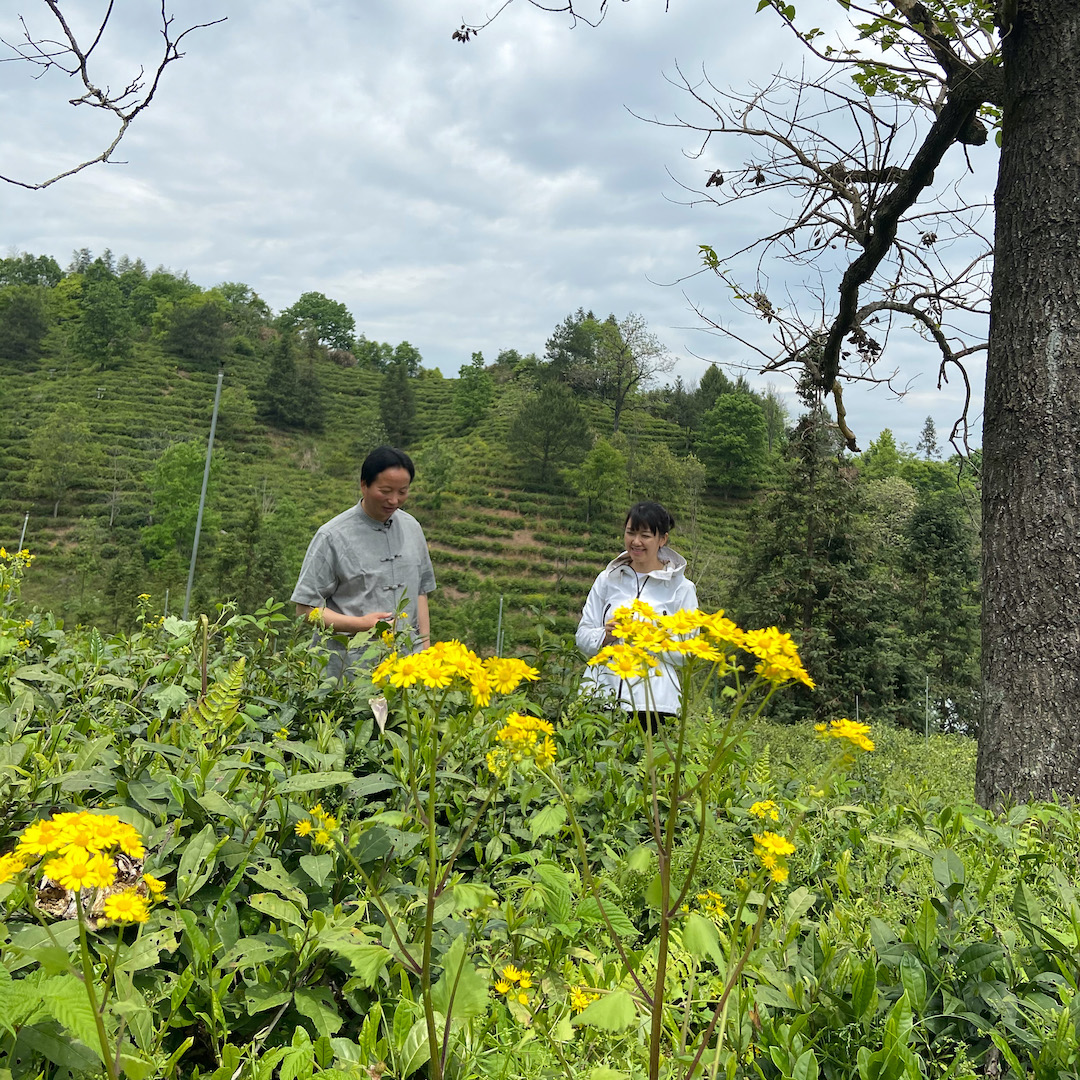Newsletter Archive Jul. 8, 2022

The fresh and aromatic 2022 harvest of Qimen Caixia (Sunrise Keemun) black tea is here – a black tea so classic and distinct, tea tasters just describe its bouquet as “the Qimen aroma.”
We’re featuring it and 2022 Mengding Ganlu (Sweet Dew) this weekend. Don’t miss this chance to try two teas fresh from the early spring, one green and one black, both made from their regional heirloom cultivars.
With teas like these, it’s easy to be precious. Please let us persuade you otherwise.
We’ve all been there. You’ve just got yourself a tea that’s beautiful, rare, and expensive. It’s exciting, but then comes a troubling thought: “Is there a right way to brew this?” or maybe even “Can I trust myself to do it?”
The answer is a definite yes. The good news is that the nicer your tea, the more likely you are to get a good result, no matter what you do. And when it comes to your brewing skills, you can always be assured that if you’re enjoying the tea, you’re absolutely doing it the right way. If you’re not enjoying it, you’ll intuitively adjust your brewing style until you do.
That said, there’s pleasure in experimentation. It can be fun to brew your tea differently and coax different flavors and experiences out of it.
Taking the tiny green leaves and buds of Sweet Dew as an example, you could chuck them in an empty jam jar and pour hot water in after them. Done! Beautiful, simple, lots of flavors on display.

But maybe you’d like to emphasize the intensity of Sweet Dew’s mineral flavors. You can get more from your tea if you brew it hotter, with more agitation, and with more steeping time. Brew Sweet Dew in a gaiwan with water starting to bubble, steep for a solid minute and pour off into a cup. Now you’ve got a tea with a full and drying body, layered in vegetation, minerals, chestnut, and smoke.
On the other hand, maybe you like your green tea softer, smoother, and, well, greener. Try filling the bottom ¼ of a pint glass with bubbling water (185°F (85°C) degrees, or thereabouts) and then sprinkling your tea onto the water’s surface. Allow it to steep until the leaves are saturated with water and begin to sink, then top off your glass with hot water. Now kick back in your chair with that pint glass full of notes of a spring meadow, sea breeze, and the softest note of tropical fruit.
These techniques can be applied to Qimen Caixia black tea for just as much fun. Hint: if you dig its fruity, spicy, and floral aromas, try making it in a gaiwan. If you’re more into mellow, sweet malt, try the pint glass.
Also, if you don’t like thinking about brewing at all, just don’t think about it and enjoy.
If we find ourselves worrying about brewing a new tea and see it as a challenge of technical knowledge and brewing prowess, we should remind ourselves that this is not a test – you’re entitled to the pleasure of discovering how a tea brews and what you like. It’s part of the fun.

